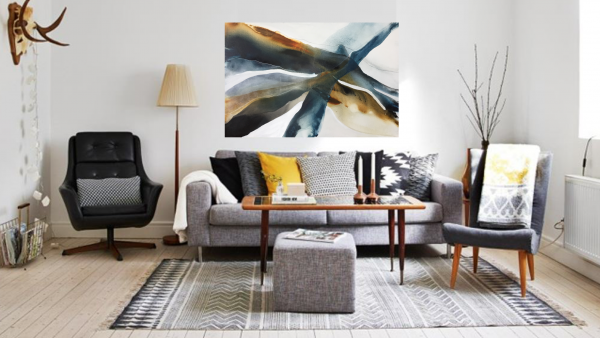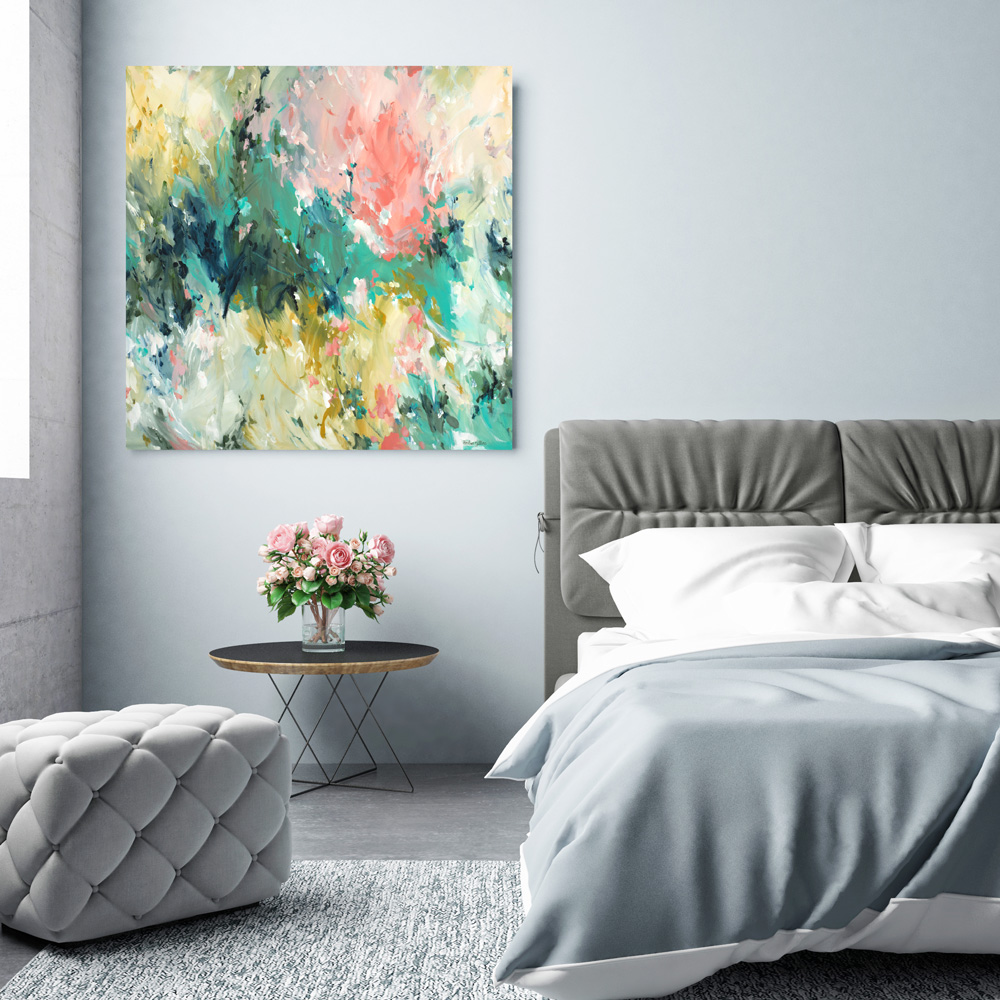A beginner’s guide with easy tips to collecting art on any budget.
Words: Olivia Alexander
Please, don’t be intimidated by the term ‘art collector’.
You may think art collecting is for the rich and famous, those with surplus funds who collected the big names like Picasso, Warhol and Renoir. On the contrary, building an art collection is achievable for most people.
A home looks empty without art on the walls. Collecting original art is a great way to add character and your own special touch to your home or office.

Here, I’ll share some easy tips on how you can get started in the exciting world of art appreciation and collecting.
Embracing the new art world opportunities
The past decade has seen huge changes in the art world. The internet has given us access to online galleries, art studios and other art platforms worldwide. Art galleries hosting exhibitions or, venues run by artists, Open Studios and art trails provide even more options. All these are opportunities in which we can engage with art and artists.
While big name artists may be out of reach for the average income, consider emerging and mid-career artists. This a great way to collect some fabulous art from some promising creatives. You’ll also build a collection to be proud of.
It’s all a matter of knowing what to look for.

Getting started
Although the options and choices can seem overwhelming, here are some tips to make it easy.
1. The Art Collector… consider which one you are
• The investment collector
• The ‘I Love Art’ collector

2. Where to look for, and learn about art
There are lots of options for finding and learning about art, which is a great idea if you’re new to the art game.
Here’s some suggestions to get you started;
• Online Art Galleries, like Art Lovers Australia for example.
• Galleries, both public and private
• Artist-run studios or co-operatives
• Local exhibitions, group and solo shows.
• Art magazines and books.
• Museums
• Art appreciation or art history courses.
*Tip: Start by searching Art Lovers Australia for a great selection of art. Check the ‘Theme’ section below for some ideas.

3. How to buy
Try to be open minded in your preferences.
Your tastes will change over time as you become exposed to more styles of art and your knowledge grows.
Two basic tips to remember:
- Buy what you love!
- Buy what you can afford.
…I know, it sounds too easy. This is a basic and solid foundation for starting an art collection. If you follow those two rules, you can’t go wrong.

Now, let’s expand these a bit further.
To get some suggestions, I spoke to Andrea Hope from Kiama Art Gallery, a long time collector of French art. Andrea also runs online and offline courses on Art Appreciation and Art history.
Here are some of her tips.
• Buy what you love! If you buy what you love you will have a collection to be proud of.
• Don’t buy second-best. Wait, save up or see if you can pay it off. If you really love it, buy it!
• So many people say, “I wish I’d bought it”, and then it was too late.
• Andrea also said that her collection is eclectic. It embraces many different styles and genres. Not just pieces from famous artists but also local artists.
• Select works that are technically competent, both in design, balance and colour.
*Tip: If you’re new to the art world, consider undertaking an art appreciation course. It will open a whole new world and build your confidence as a collector.

4. Who to look at
Make use of the internet. Most serious artists these days have an online presence or website. Check out Art Lovers Australia and have fun exploring!
When you see artists you like, read the About section, CV resume, and the artist’s bio.
It will help to give you a greater understanding of the ‘artist behind the work’. This is helpful if they work in a style that is unfamiliar to you.

Consider these options:
Mid-career artists are a great source to find quality original work.
They have worked consistently at their art for many years displaying a solid artistic background.
Emerging artists are another source to look at. They may not have a long CV or exhibition history but do have a look at their work.
*Tip: Questions to ask yourself are – Do they have a consistent body of work? Can you see that they are growing as an artist?
5. What to buy
If you’re still unsure, then start small. After all, if you make a ‘faux pas’, it won’t be so obvious. And really, you can’t go wrong anyway. The art you buy doesn’t have to appeal to everyone else; it’s about what you love!
Small to medium size pieces are great because they can be easily moved around your home until you find a spot to suit.

6. Look for original art, those ‘one of’ pieces. Then you will have something truly unique. If your budget is tight or you can’t afford the original piece, consider limited edition prints.
Limited editions are usually a very small number of prints, numbered and signed by the artist.
As your confidence grows you maybe feel ready to select a larger piece of artwork.

7. Consider Themes
You may want to collect works that have a theme, subject or period. You may notice that you are continually drawn to a certain theme.
Suggestions:
• Landscapes,
• Abstract,
• Portraits or figurative works,
• Still life,
• Black and White Photography,
• Animals
You can be eclectic in your choices, even while keeping to a theme. Include mixed media, drawings, sculpture, paintings, digital art and photography in your collection in all sorts of mediums.
Ask yourself, “What is it that I love about this work? Is it the colour, style, the story? Is it because it’s different to my usual taste?”

8. One very important final point
One thing you may not have thought of is the artists themselves.
When you buy original art work you enable that artist to continue their work and career. It may sound simple but you actually have an impact on them and their future.
That’s pretty neat!
So, some quick tips to recap:
• Buy what you love, buy what you can afford. Easy peasy!
• Develop your knowledge by visiting galleries, exhibitions, online platforms and art studios.
• Look at mid-career and emerging artists.
• Start with small works if that’s what you feel most comfortable with.
• Look for original art and limited edition prints.
• Look for works that are strong in design and that capture your attention and appeal. Ask yourself, “What will add more strength to my collection?”
• Don’t be afraid to be eclectic in your selection, your tastes will change over time anyway.
• When you are hanging the art in your home, move pieces around till you find where they ‘fit’. There’s always somewhere for them!
I hope that this has helped you in some way and that you are ready to go out and start your own art collection.
For more information
Art Lovers Australia












